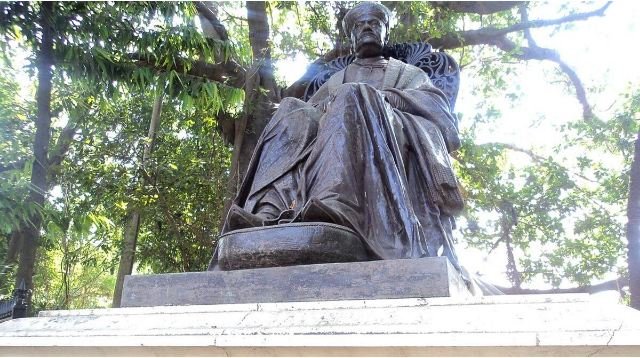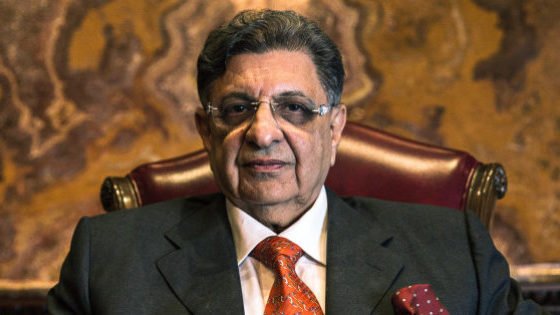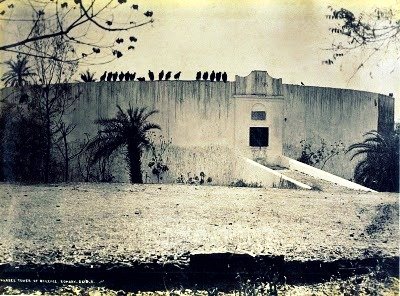Bronze statuette of Jeejeebhoy, made in likeness of philanthropist’s statues in Mumbai, goes up for sale.
In Mumbai, the term “JJ” is a significant one and can refer to only one man — Sir Jamsetjee Jeejeebhoy (1783-1859), a Parsi businessman who traded in opium and textiles and gained the distinction of being one of Mumbai’s premier patrons thanks to the number of institutions he helped set up. An art school, a hospital, a causeway and more bear the Jeejeebhoy name. It’s no surprise then that statues dedicated to the philanthropist are found even today—a stately marble one in The Asiatic Society at Horniman Circle, and bronze ones near Churchgate station and at the JJ Hospital in Byculla. The life-size statues have the same design—a seated Jeejeebhoy, his posture relaxed yet dignified, sporting a dagli (Parsi attire) and phenta (a hat typically worn by wealthy Parsis). As India’s first knight and baronet, he wears a painted medallion of Queen Victoria.
On August 4, a bronze statuette of Jeejeebhoy is set to be auctioned as part of a live sale of decorative objects organised by auction house and gallery, Pundole’s. Estimated to fetch around Rs 3-5 lakh, the statuette is, curiously, of the same design as its larger siblings. All the works are associated with Baron Carlo Marochetti (1805-1867), an Italian of French citizenship who went on to became Queen Victoria’s favourite sculptor.
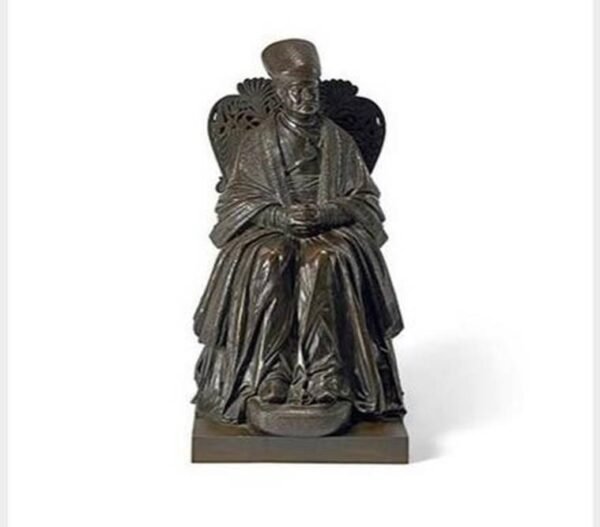
Marochetti relocated from Paris to London in the mid-19th century, where he would later set up a foundry in South Kensington.
“Alongside public commissions, sculptors often made maquettes (smaller versions) for private collectors. In this case, all versions we see in Mumbai were created by Marochetti, both in bronze and one in marble. He created three different sizes of the same image in different mediums,” said Mallika Sagar, auctioneer and a specialist at Pundole’s. It is suspected that the bronze statuette of Jeejeebhoy could have come from Marochetti’s foundry, but cast by Morel Ladeuil, who produced other statuettes for the sculptor.
In Mumbai, the public Jeejeebhoy statues don’t bear plaques or inscriptions regarding their origins. Even this particular statuette has no exact date ascribed to it, as sculptors often made several editions. But the works tell a story that connects the Raj, Marochetti and Jeejeebhoy, especially when the politics of statues have become important in recent years.
While far from being an obscure sculptor, Marochetti is more likely to be known by his works in India rather than his name. The equestrian statue of Mark Cubbon in Bengaluru and Angel of Peace in Kanpur are part of his legacy.

R Venkatesh, a Mumbai heritage researcher and photographer, said, “Sir JJ…earned his prosperity leveraging upon the globalised British Empire’s economic network, yet was a deeply rooted citizen of the city, contributing immensely to its institutions and public causes philanthropically. A perfect example of how “joint enterprise” between British and Indians panned out in 19th-century Bombay.”
According to Jehangir RP Mody’s Jamsetjee Jeejeebhoy (1959), at a meeting convened by the Sheriff of Bombay on June 24, 1856, it was unanimously agreed that Jeejeebhoy be honoured for his benevolent acts shown to “the poor and suffering of all castes and creeds”. Subscription lists were circulated and Marochetti was commissioned for Rs 40,000.
“So great was the regard of Queen Victoria and Prince Albert for the greatest of their Eastern subjects that they visited Marochetti’s studio to see the statue before it was shipped to Bombay,” writes Mody. It was completed in 1858 and stands today at The Asiatic Society.
Marochetti also cast a replica in bronze which is located at the JJ Hospital. The statue today enjoys a god-like status, with diyas and candles on a makeshift altar, and a notice that asks people to remove their footwear before stepping close to it.
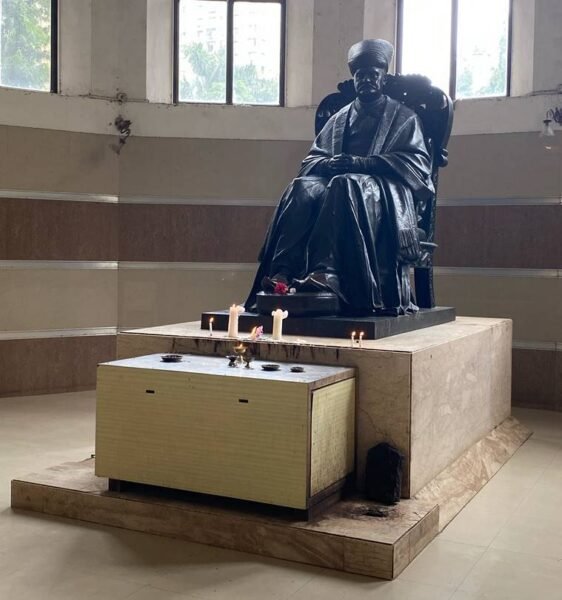
The story of the third bronze statue, one among the many memorials to Indian and British luminaries that flank either side of Veer Nariman Road at Churchgate, is a more complicated one. According to art collection management system Fine Art Facts, it was loaned to the South Kensington Museum, now known as the Victoria and Albert Museum, where it was allegedly considered surplus and kept on the roadway outside the museum. It was even thought that it might be of considerable value as scrap. Subsequently, a member of the Marochetti family (who initially believed the statue was “a white elephant”) gifted it to the Jeejeebhoy family, who in turn gifted it to the city of Bombay.
Fine Art Facts also states that it is possible that Marochetti made a statuette before the first marble statue of Jeejeebhoy but it’s hard to say if it’s the same piece we see today. Sagar said that the statuette came from a private UK collection before it was offered to Pundole’s for sale by its current owner.
Source: Click Here

